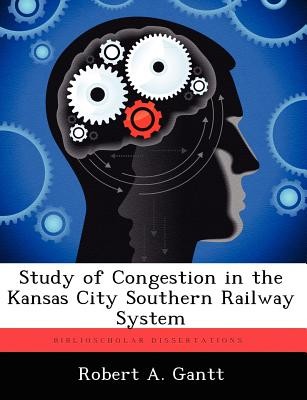
- We will send in 10–14 business days.
- Author: Robert A Gantt
- Publisher: BiblioScholar
- ISBN-10: 1249250358
- ISBN-13: 9781249250357
- Format: 18.9 x 24.6 x 0.5 cm, minkšti viršeliai
- Language: English
- SAVE -10% with code: EXTRA
Study of Congestion in the Kansas City Southern Railway System (e-book) (used book) | bookbook.eu
Reviews
Description
This study investigates the contributing factors of rail congestion at Kansas City Southern Railway's (KCSR) switching yard - Knoche Yard - located in Kansas City, Missouri. This thesis asserts that lack of locomotives, known as power, is the most significant contributor of congestion in the Knoche Yard. An overview of the macroscopic causes of rail congestion and its effects on railroads and the national economy is provided to demonstrate the significance of this study. Additionally, Union-Pacific Railroad's chronic congestion problems associated with their 1997 merger with Southern-Pacific Railroad is summarized. Two quantitative models are used to test power's relation to congestion. Friedman's Rank Test, a nonparametric statistical model, tests the significance of power against eight other factors in their relation to train delays. The second model tests the correlation between train time delays and number of "36-hour cars." This study concludes that lack of power is the most significant contributor of rail congestion in the Knoche Yard based on the results of the quantitative models. The results of the first model clearly show power to be the most significant contributor of train delays. The results of the second model show a correlation, albeit weak, between delayed trains and number of "36-hour cars."
EXTRA 10 % discount with code: EXTRA
The promotion ends in 23d.17:16:40
The discount code is valid when purchasing from 10 €. Discounts do not stack.
- Author: Robert A Gantt
- Publisher: BiblioScholar
- ISBN-10: 1249250358
- ISBN-13: 9781249250357
- Format: 18.9 x 24.6 x 0.5 cm, minkšti viršeliai
- Language: English English
This study investigates the contributing factors of rail congestion at Kansas City Southern Railway's (KCSR) switching yard - Knoche Yard - located in Kansas City, Missouri. This thesis asserts that lack of locomotives, known as power, is the most significant contributor of congestion in the Knoche Yard. An overview of the macroscopic causes of rail congestion and its effects on railroads and the national economy is provided to demonstrate the significance of this study. Additionally, Union-Pacific Railroad's chronic congestion problems associated with their 1997 merger with Southern-Pacific Railroad is summarized. Two quantitative models are used to test power's relation to congestion. Friedman's Rank Test, a nonparametric statistical model, tests the significance of power against eight other factors in their relation to train delays. The second model tests the correlation between train time delays and number of "36-hour cars." This study concludes that lack of power is the most significant contributor of rail congestion in the Knoche Yard based on the results of the quantitative models. The results of the first model clearly show power to be the most significant contributor of train delays. The results of the second model show a correlation, albeit weak, between delayed trains and number of "36-hour cars."


Reviews